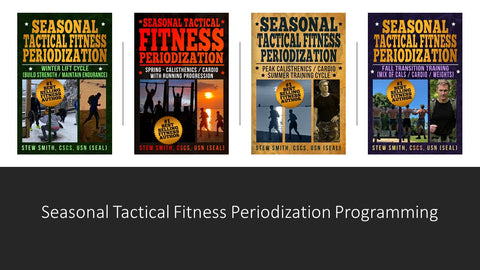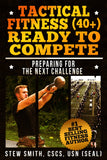Military, Police, Fire Fighters…
Learn to Treat Yourself Like an Athlete
Back in the 90’s, before there were terms like “tactical fitness” or “tactical athlete”, I remember stating that one of the biggest problems in the public service (tactical) communities is few consider themselves athletes, nor do they come close to treating their bodies like an athlete would. Obviously, you do not have to be an athlete when serving your country or community. However, taking care of your health, wellness, and ensuring your physical abilities are up to being able to do your job and successfully recover from the personal, professional, and physical stresses that are placed on you everyday is key.

Confusing What the Tactical Athlete Needs
You have to realize that there are stages of training / life of the tactical athlete. In fact, the three phases of tactical fitness best describe the differences of the training and stressor focus each phase of the journey requires:
Phase 1 - Getting Accepted TO the training
Phase 2 - Getting THROUGH Basic, Boot Camp, Academy, or Spec Ops Selection.
Phase 3 - Active Duty Member in the Tactical Professions
Each phase requires more from the recruit, candidate, and operator as you make your way through the pipeline. Understanding these requirements at each phase will help you realize not only the hard work in your journey that is needed, but also the amount of recovery that is needed as well.
Phase 1 and 2 will focus primarily on your physical abilities but also push your ability to learn new skills where phase 3 is about maintaining your physical abilities during long work hours, high stress situations, and balancing a personal life at the same time. Another issue with phase 3 is that the active duty operator will be older longer than he/she is younger which will start to create new problems, aches, pains, and stressors. Learning how to balance stress and stress relieving activities will be a daily challenge for the tactical athlete so the more you know about recovery the better.
The #1 Most Important Piece to the Puzzle - Recovery!
The term “tactical athlete” is relatively new and has grown in popularity and understanding in the last decade mainly out of necessity with multiple combat engagements within the military and anti-terrorism taskings within the police and fire/first responder communities. However, for decades we as a community have not thought of ourselves as athletes. But we are.
Learning how to recover from a tough workout day as a high level athlete is not unlike how the tactical athlete needs to recover from the daily stresses of life, work, and the physical stresses of the job each day. It takes careful balance:

See recovery articles/videos for more ideas on stress mitigation for the physical pains, personal (mental / emotional stress), and professional challenges we face each day.
The Elements of Fitness for the Tactical Athlete
The athleticism is different. You do not need to be world class in any element of fitness. In fact, it is better to be good at all the elements of fitness vs stellar in any on element of fitness only to be lacking in others. The elements of fitness a tactical athlete needs to be able to function well in are the following areas:
Speed and Agility – Short explosive runs and changes of direction
Cardio Endurance - Run, swim, and ruck farther and faster. Swim to save a life, to cross a river, and to be more effective on 75% of this planet.
Strength and Power – Lift equipment, gear, and people too.
Flexibility and Mobility – General Flexibility and Mobility gained by stretching and full range of motion movements help with pain but also help you move easily over uneven terrain and obstacles.
Muscle Stamina – Move yourself and gear up, over, under, and through space for longer periods of time / higher repetitions.
Old Man Grip – Hold gear, climb rope/mountain, grab things and people without tiring.
Skills – Work training, learning and maintaining job skills, and the right mindset to accomplish the mission regardless of the physical discomfort of the situation.
Recovery – Anything and everything in your job requires some form of recovery from days off, better sleep, better breathing skills, better nutrition, proper hydration, better flexibility / mobility, and other forms of stress mitigation activities.
Longevity
The end result is to build a healthy operator that has longevity and has not burned out or over-injured themselves during the more physically challenging phases of the journey. However, maintaining reasonable fitness standards so the job itself does not cause career ending injuries requires smart training guidance and understanding that on stressful days - less is more. Having a stressful day at work and topping it off with a butt-kicking high intensity workout may not be the best option today. Burning the stress candle at both ends is not going to help you with overall recovery. Often an easy cardio day filled with deep breathing is sufficient for metabolizing the stresses of the day.
Think about it...Your Fitness is THAT Important Still...
Tactical Fitness is primarily the training required to get into and remain in the military, police, fire fighter, EMT services. The goal of tactical fitness is to create a strong and capable body to save yourself and others in an emergency situation. But we all should be strong and capable enough to save ourselves and others in such situations (accidents, fire, storms, etc). Be an asset in an emergency situation. Do you need to be saved? Or can you take care of yourself and your loved ones?
Consider Learning About A Way to Train: Seasonal Tactical Fitness Periodization
It all started more than 20 years ago, when I realized I needed a break from an aggressive Summer running program. But to be honest, I had been running similar to this for years - year after year after year. So I started a downward regression that matched the time of day. As the days got shorter in the Fall and Winter, my runs did too. Replaced running with non impact cardio options and lifting weights for the first time in nearly 15 years of training (at age 30). It was my first winter lift cycle. It rebuilt me. Increase joint stability, strength, power, and was ready to try running again in the Spring - but this time was a logical progression of about 10-15% volume increase each week.
This was my first year of training with out injury in a very long time and for the past 20+ years I continued to not only use this method of training myself, but have taught it to thousands of tactical athletes in person and even more through books, ebooks, and online coaching. (see below for more info).
Here is the way I arrange my
workouts throughout the year.
I do not have a workout of the day - I have a workout that fits into my year training cycle. I think of the four seasons as a way to challenge ALL of the fitness elements (speed, agility, endurance (run, swim, ruck), strength / power, muscle stamina, mobility and flexibility) – not all at once but spread throughout the year. You will find you can still be above average in ALL the elements of fitness which is invaluable to your success in any Tactical Profession.

Spring - Calisthenics and cardio workouts. Run / Swim Progression. But there is a mix of weighted regressions, and progression of calisthenics and running. As the days of the year get longer, so do the workout times and running / calisthenics volume. (Element focus: Hypertrophy, muscle stamina - strength mix, aerobic / anaerobic endurance - fast timed run / swim / ruck pace)
Summer - Calisthenics and cardio workouts (advanced). Run max / PT Peak, Swim progression. But with supplemental lifts for people who need some strength focus more than a high mileage focus (runners, triathletes, other endurance athletes). (Element focus: endurance (run, swim, other), muscle stamina (high reps) of calisthenics and some load bearing events.
Fall - Calisthenics and running volume start to decrease. Non-impact cardio workouts start to replace some of the running (bike, swim, row) However, rucking and swim with fins progressive throughout the Fall and Winter to maintain cardio conditioning especially for people who need to lose weight and not focus so much on strength training (powerlifters, football players, strength athletes)
(Element focus: Hypertrophy, muscle stamina - strength mix, aerobic / anaerobic endurance - fast timed run / swim / ruck pace)
Winter – We still warm-up with calisthenics, but this cycle is heavy weights, weight vest calisthenics, more non-impact cardio workouts. Some rucking / More Swim with fins peak. Most people put on 10-15 lbs in this cycle (of muscle and gains in strength) but maintain about a 8-10 miles per week of faster paced running. (Element focus: Hypertrophy, strength/power, speed / agility)
So, what are you waiting for? Head over to StewSmithFitness.com and start your journey to crushing those fitness tests. Until next time, stay focused and keep pushing yourself. You've got this!
No Matter What Phase of Preparation You Are In - We Have an Answer For You
(In fact, there are more than 40 books, 1000+ articles, online coaching - and more)
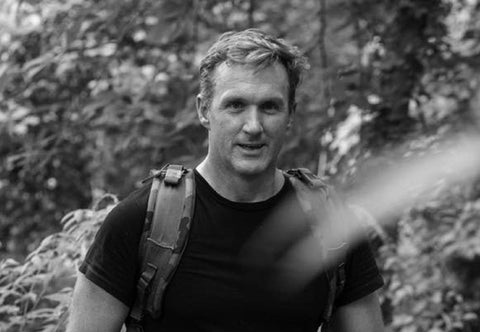
Who is Stew Smith CSCS? Coach, Trainer, Writer, Podcaster: I'm the former Navy SEAL that tactical candidates go to for books, ebooks and online coaching to prepare themselves to get to and through intense tactical assessment and selection programs and qualify for service in their chosen tactical profession. See More at StewSmithFitness.com
Where to Find More Information About Optimal Performance Training Programs
When you start training again, consider the seasonal tactical fitness model. I call it A WAY to train and obviously not the only way to train. But it offers the opportunity to never neglect your weaknesses, helps with flexibility and mobility, but will also put you at a level of physical abilities where you are happy with your overall ability to do just about anything. We have a system where the seasons dictate our training. When it is nicer outside, we tend to run and do more calisthenics. When it is colder and not so nice, we lift more, run less, and still maintain our outdoor activities with shorter runs and rucks. Check it out: Seasonal Tactical Fitness Periodization System.
These Seasonal Tactical Fitness BLOCK Periodization programs will walk you through 4 x 4 weeks cycles with 16 weeks of each season in two programs. (32 total weeks)

Increase Strength & Crush the PST / PAST
3 Weeks Strength - 1 Week PT / Cardio Focus
(16 weeks)
These programs will walk you through 4 cycles with 12 weeks of each season in two programs.
The Specific Military / Special Ops Physical Fitness Workouts

Navy SEAL Workout Phase 1
Navy SEAL Workout Phase 2 - 3
Navy SEAL Workout Phase 4 Grinder PT
Navy SWCC Workout
Army / Air Force Advanced Fitness / Special Ops
Army PFT Workout (Prep For Rucking, OPAT, ACFT)
Army Special Forces / Ranger Workout
Army Air Assault School Workout
Army Airborne Workout
Air Force Special Warfare IFT / OFT / Selection Prep



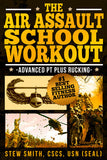
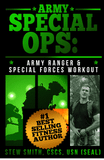


Advanced Running Program - Special Ops Supplement Plan
USMC RECON / MarSOC Workout
USMC OCS / TBS Workout
USMC IST and PFT
The Combat Conditioning Workout
Air Force PJ / CCT Workout Battlefield Airman Prep Course
The UBRR Upper Body Round Robin Workout / Spec Ops version
The Coast Guard Rescue Swimmer / Navy SAR Workout
The Service Academy Workout (West Point, Navy, Air Force Academy)
The Navy, Air Force, Marine Corp Boot Camp Workout
The Law Enforcement Physical Fitness Workouts
The FBI Academy Workout | FBI Workout Vol 2
The DEA Workout
The FLETC Workout - Ace the PEB
The PFT Bible: Pushups, Sit-ups, 1.5 Mile Run
The Fire Fighter Workout - Ace the CPAT
Beginner / Intermediate / Advanced Fitness Guides
The Beginner / Intermediate Guide to Fitness
Reclaim Your Life Erin O'Neill Story (beginner / intermediate)
Veterans Fitness Baby Boomer and a Flat Stomach
Circuit Training 101 Beginner / Intermediate Guide to the Gym
The Busy Executive Workout Routine
The Obstacle Course Workout Prep for Races or Mil, LE, FF
TRX / Military Style Workouts Adding TRX to Military Prep Workouts
Tactical Fitness Over 40 Series
Tactical Fitness (40+) Phase 1, Phase 2, Phase 3, Phase 4
Online Coaching Options
Online PT CLUB - Weekly Workouts created personally for you.
New Member's Only Content / Services Program!
If you want access to years worth of workouts, many of the top eBOOKs, favorite workouts of the week, free fitness APP, closed Facebook Group, video / picture library of exercises, and more access to LIVE Q/A sessions check out the Stew Smith Fitness Members Section.
The dashboard below has the links to all the information, archives, videos, and links to workouts, podcasts, live Q and A lessons.
Consider this! - A Membership Program and Gain Access to Exclusive Content
(click for Fitness Club Dashboard - members only)
Questions? Just email - Stew@StewSmith.com
At StewSmith.com - List of Products and Services
- FREE Articles.
- Podcasts and Swimming Videos (Youtube, TikTok, Instagram)
- eBooks
- Books and eBooks in PRINT
- Stew Smith Fitness Club membership site
- Online Coaching
Stew Smith Fitness
Find more about our programs on our social media:
Instagram TikTok Youtube
Stew Smith is a former Navy SEAL and fitness author certified as a Strength and Conditioning Specialist (CSCS) with the National Strength and Conditioning Association. Visit his Fitness store if you're looking to start a workout program to get you TO and THROUGH any tactical fitness training program OR create a healthy lifestyle. Send your fitness questions to stew@stewsmith.com.

